Locations and Trip Reports / Australia Nov 05 Northern Barrier Reef/Rain Islands
Something a little different maybe. Just like my diving skills, there Are those way better than I, and some just starting diving. Same on Photography. People teach me and they say, 'to keep it, you have to give it away". So, for me, to get better at both, (you are who you hang around with) I just wanted to focus on sharing some of my photography actions, and the pictures I got during this trip diving off of Australia. If anyone can get something from it great, and if you have some comments to help me, as some did on this trip, please share it.
If you are looking for a how/what/where/when this trip report might not be for you. Most of my trips now are so photography oriented; I thought to share it with you this way instead of eating up pages of posts showing individual pics. (Plus when we have diver related posts they roll of the board way to fast). If you want info on boats and travel either email me or someone else will hopefully do it. I loved the diving, but I think both the Spoilsport and the Nimrod both need to improve some formalities, but their house their rules, I go for the diving and I doubt you will be disappointed. Anything in this report anything that has quotes is I copying from a site to give more info about the subject. I learned lots on this trip, and now to boot, I am taking the time to work on id's and marine creature's habits, as this helps when spending time trying to locate and shoot pictures of them.
Photography, like my diving, I just keep trying to improve and improve. Sometimes, we see the growth, other times, seems like a plateau that lasts forever. Honestly, I am real happy with what I was able to do on this trip. For me, I came with a macro mentality and was not disappointed.
My camera kit is real nice and simple. KISS works real well for me. Keep It Simple STUPID~
I bring 2 Canon10d bodies, just in case, it is just a matter of 'when' not "if' I get a flood. (Which I've done 3x in my short underwater photo career :)
Ikelite Housing and I bring 2 strobes, and just use One Strobe when shooting. I like to set my strobe up directly above the housing body and either move it lower or higher or more to the front or back, depending on the distance from the subject. And never say never, but rarely will the power be FULL. I like to use 1/2, 1/4 and maybe even less. I sometimes also DO NOT like to shoot the strobe at the subject, maybe just a portion of the beam hitting the subject. This you really have to watch when the water is full of particles, or a sandy bottom.
Let me just say quick, I saw some posts on what to carry on the plane, for me, I could care less about a reg or what-not, I can always rent that, but for me, my cameras and lenses can’t be replaced, so I use a soft bag when I can and just carry on the camera equipment and when going home, truthfully, the only thing I carry is my laptop and whatever I backup the pics on. If they lose gear/camera stuff than, who cares, I'll get it before my next trip. 2 lenses for underwater are fine with me.
The Canon 17-40 and the Sigma50mm. I like this macro lense over other macros for 2 reasons.
I get 1:1 magnification and lose no size whatsoever, which helps with these guys,
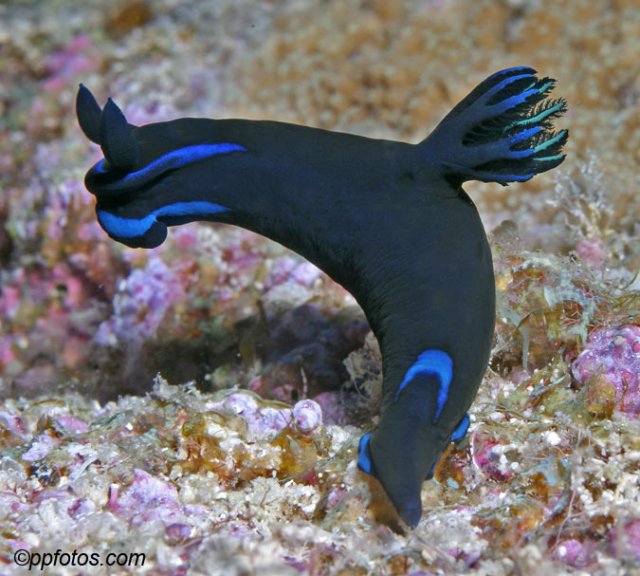
Tambja Moros
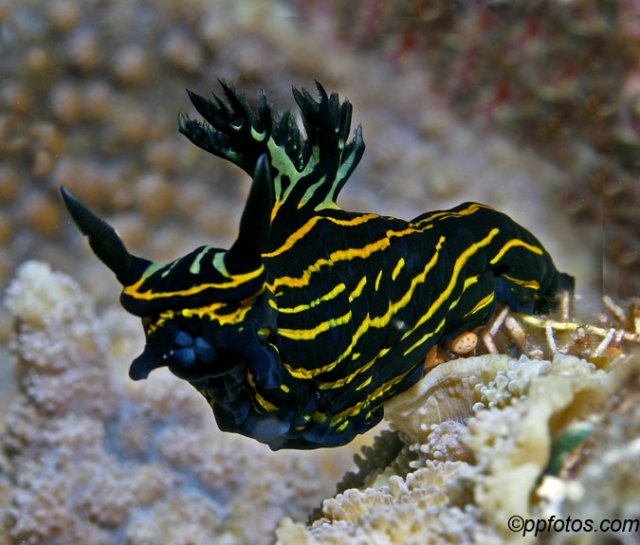
I couldn't id this nudibranch
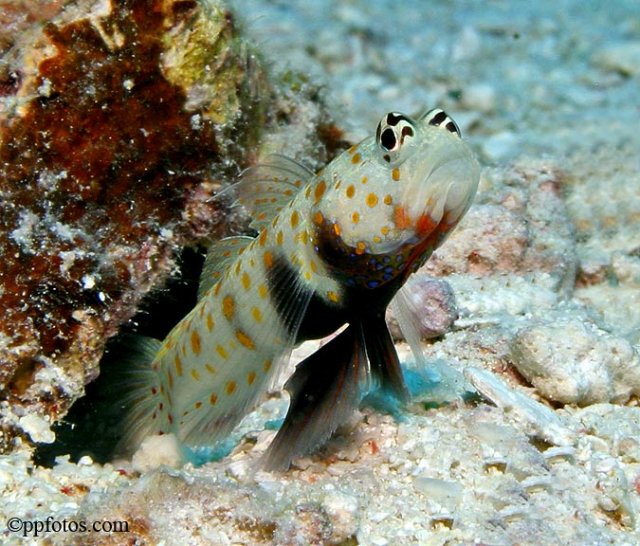
Which Shrimp Goby?
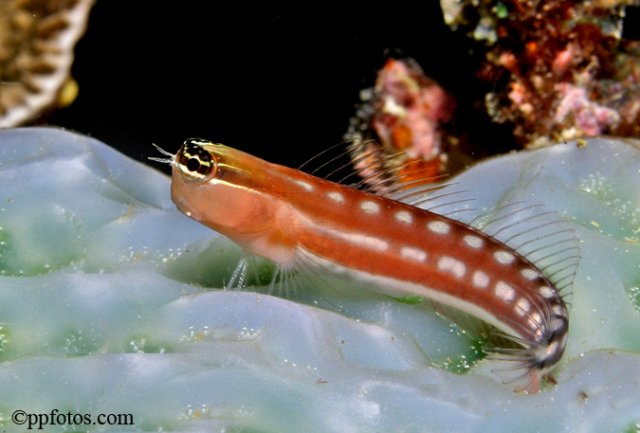
Australian Blenny
And if I am having a tough time finding the little subjects, I can still shoot nice portraits and for this fish, which is usually shy, I couldn’t believe that it was really coming at me and was to close at times to even focus.
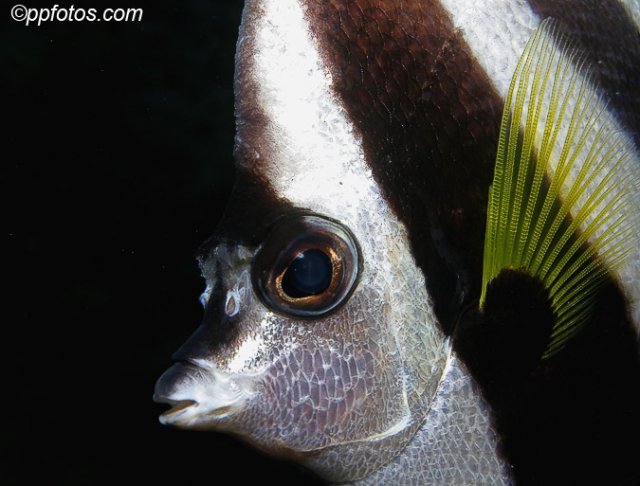
LongFin BannerFish
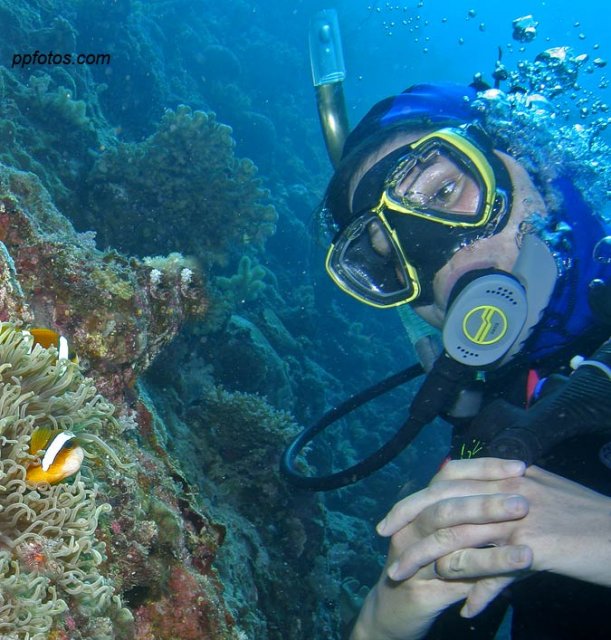
And can even work a shot this size, which before the dive, we made plans if the chance was there and having room became available we'd signal and know what we meant to try and do. (Coach Wooden says, 'failing to prepare, is preparing for failure"). And then even who knows, you might have an Elvis sighting and if you didn’t have the picture, people would think you were narc'd
At first, I couldn’t believe this was happening right in front of me, the sun was right, the silhouettes looked awesome and I said, shit, I have the macro on, then I said, go for it, and this fish train came through like rush hour traffic.
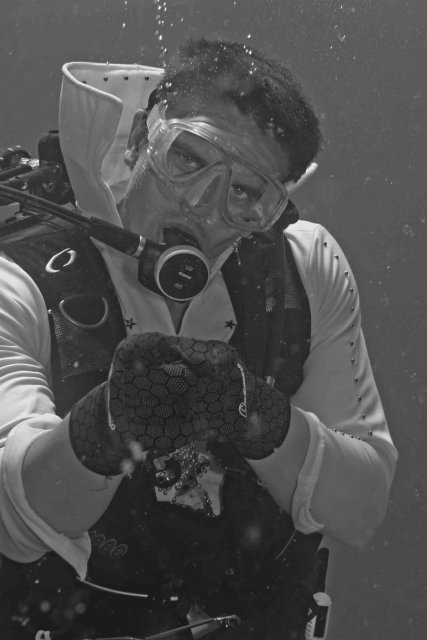
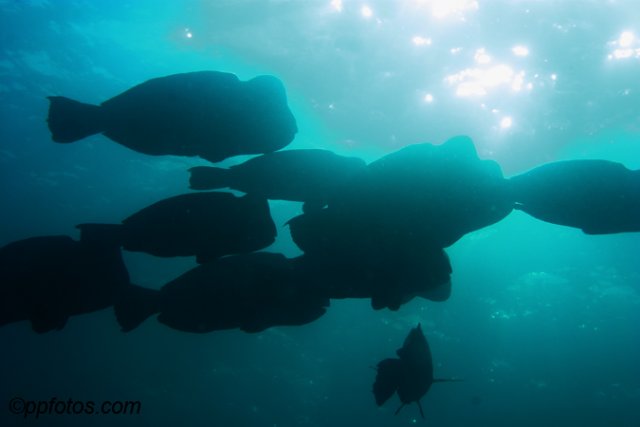
This species has something of a reputation for stand-offishness. Although my encounters with groups have generally seen them keeping a respectable distance (these algae grazing schools can be quite large and very busy), The bumphead is the largest parrotfish and grows to a maximum length of about 1.3 m.""""
The Canon 17-40 also gives a nice range, I get to play with shots like these, great when you know what you are going to see/do.
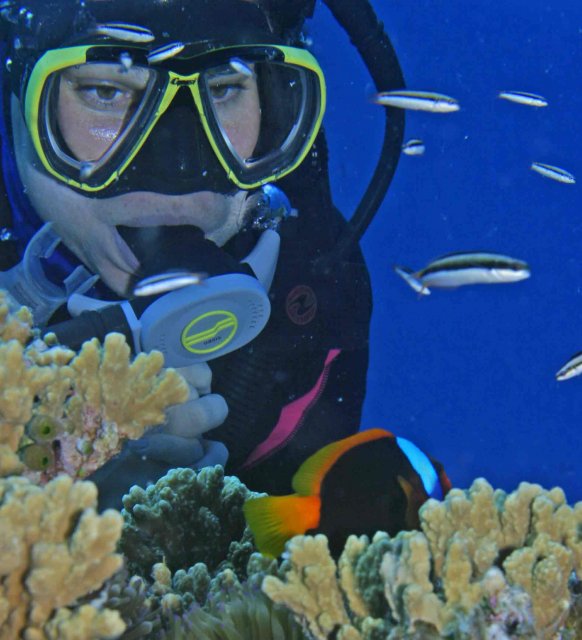
But sometimes, you just have to make a decision and go shoot with whatever you have set up.
17-40
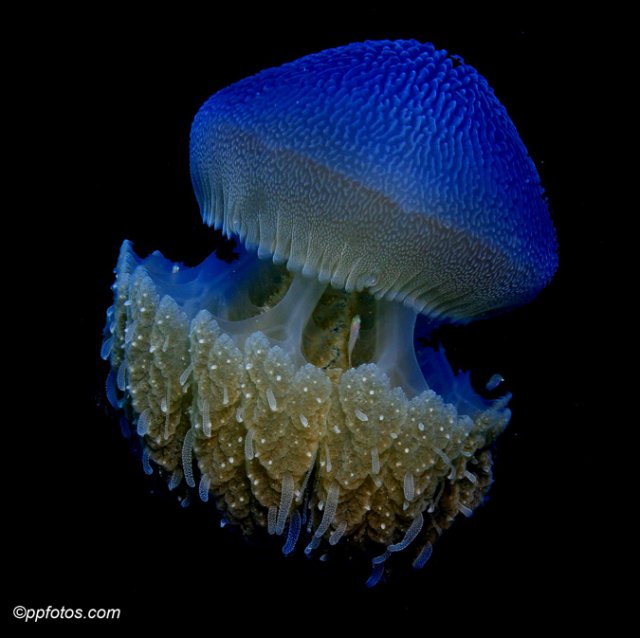
17-40
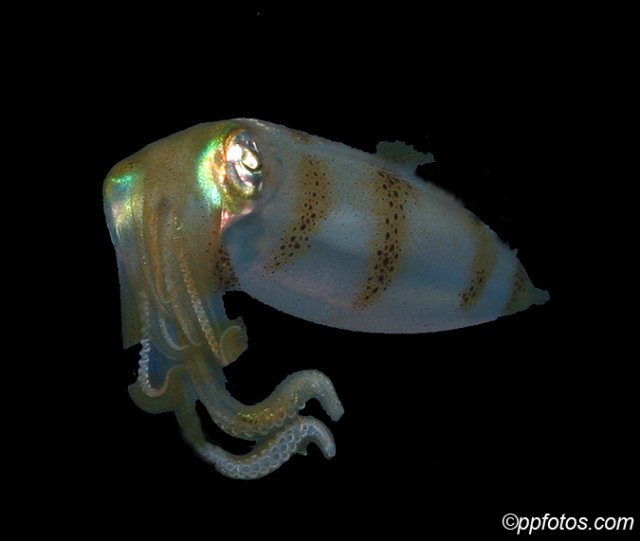
17-40
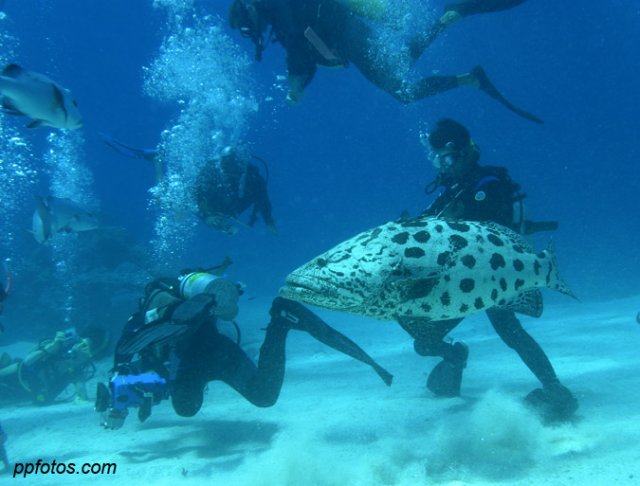
So, now you know the tools that I use underwater. Don’t forget, shooting digital, we develop our own shots. My workflow just is basic, levels, s/h, contrast, maybe a crop, USM, resize for web. Nice and easy. Maybe a clone stamp if I need. If I have to work more than 2/3 minutes on a pic, it goes to trash. I am learning to B&W some pics also, my short process for that is just 'gray scaling" under IMAGE/mode, I think it is.
Just some thoughts that were taught to me and as always, ALLLL rules are made to be broken. When I first learned to dive, then I wanted to shoot pictures. Those in the dive shop I talked to first told me,
- I said, I want to buy a camera and shoot pictures.
- They said, go learn to dive.
- I said, I am certified.
- They said, doesn’t mean you know how to dive:) Ooocchh. No shit!!
I guess they were right, watching myself and then watching others through the years, I now see what they were talking about. Especially with photography and then learning 'better photography.' Something I am learning more and more, maybe more important than just the gear and equipment but my breathing/ maybe NOT breathing at times, which equals better BUOYANCY which leads to better chances of catching that right shot at the right moment. (And if you want to learn buoyancy, go hire LarryL to teach you. watching that man in midwater, not moving an inch up or down, wow, did I want to get better right then.) What do I mean by not breathing, well I am NOT telling anyone to hold their breath, but at times, you do what you learn from missing chances at shots, those exhales can make some subjects really take off, even like for what you think is an easy subject for a marine creature that really doesn’t move to boot, you better come in real real slow, watch that you don’t block the sun or the passing water movements and watch the noise of an exhale, ....."Christmas Tree Worms open their corkscrew-like plumage to filter plankton and other microscopic nourishment from the ocean. These worms are found sprouting from holes in coral heads like tiny Christmas trees and are extremely sensitive to movement. They will pull their plumage back into their protective tube in a split second if approached by a fish or diver. Corals shelter many kinds of invertebrates, such as this Christmas-Tree Worm. This worm builds a tube on the surface of the coral, and as the coral grows it buries the tube in the skeleton of the coral. Then the worm is protected with only its head showing. If danger threatens, the worm can pull its head down into its tube in the blink of an eye.......
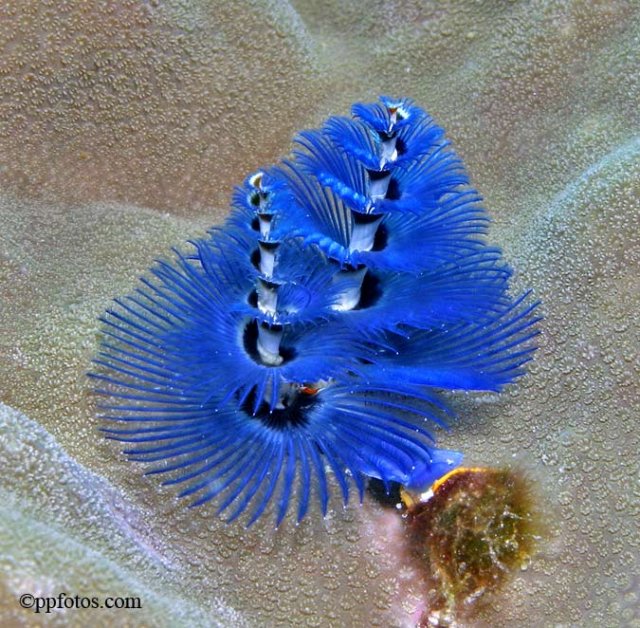
Always a learning curve for me, but it does make a difference. Jim Church used to sing a little song with the words
- Distance
- F-stop
- Angle
- shoot
Find your subject from a distance and then BEFORE moving in, know about where/when you can shoot from what distance, (never more than 3ft away), 2-fstop-have your settings set before moving in, 3-angle- always try and shoot up or directly level with your subject 4-shutter away.. -- as ChrisM says, shoot till your fingers bleed -- don’t forget rules are made to be broken though. Not the best angle, but this was a good cleaning station and once the fish got comfortable with me, I got some chances, though the angle wasn’t the best, "Oftentimes the fish will set up a "cleaning station" which other fish will visit to be cleaned of parasites. Often times the fish can be seen inside the mouth of much larger fish and just cleaning away!""
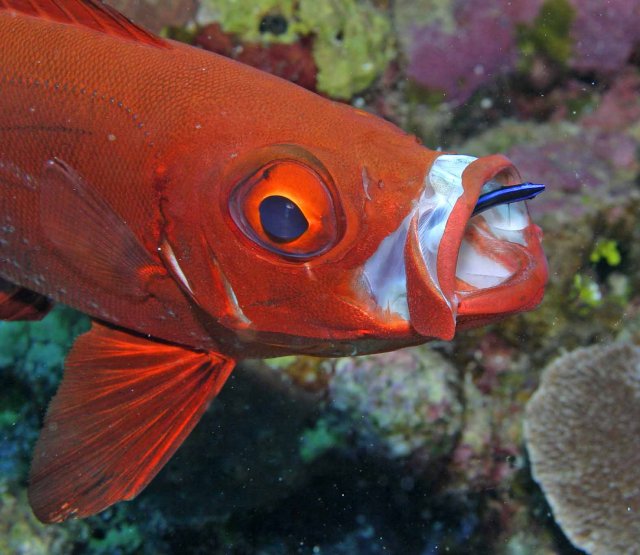
Crescent-tail bigEye/blue streak cleaner wrasse
Search and discover was the mission, I stood to my game plan, NOT to Shoot everything, find something you like and just work it, even if it was the only subject of a whole dive. Sometimes, as I was goofed on, I barely left the shadow of the boat... sorry but I think we miss so much going off on a long swim of a reef and then back again...yes, sure I can miss something in the distance, but really I could dive most sites many times, there is just to much to see in one or 2 dives. Dive sites like Steve's Bommie, Pixies Pinnacle and MONIQUE among many others, offered some awesome chances and angles to work with I can shoot clown fish, forever, black&red clown fish
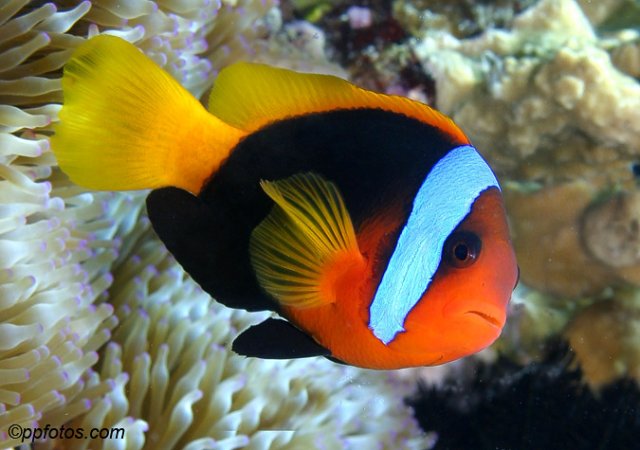
Male Spinecheek
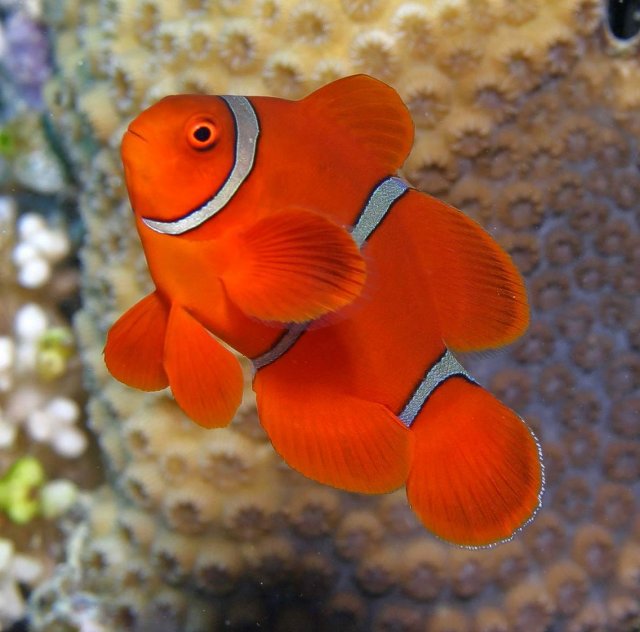
Clarks
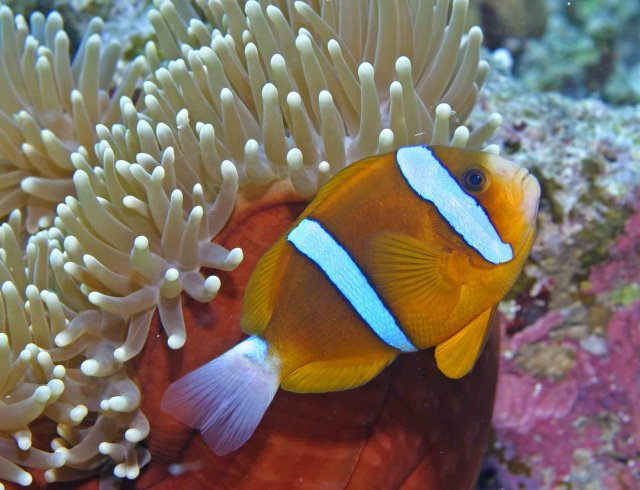
3 Spotted Dascyllus
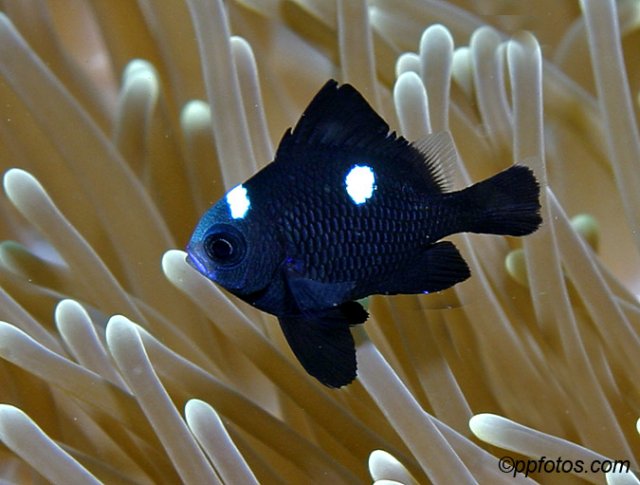
Then I thought, I really got lucky and got some pictures of subjects that I never got before...well I was1/2 right, as I don’t have these subjects in my galleries, but they weren’t what I thought they were.
This appears to be a sharp-nosed puffer fish at first glance, but the long, broad dorsal and ventral fins of this small three-inch (7.6 cm) filefish betray its true identity as an imposter. The "real" puffer fish has a much smaller dorsal fin, set further rearward along the spine. The filefish gains a survival advantage through mimicry, since sharp nosed puffer fish are avoided by predators because of their poisonous flesh
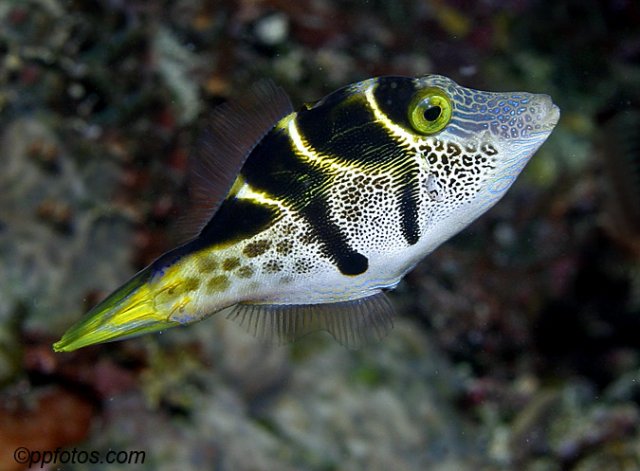
Another trickery of nature, I thought I had the real shy Lemon Angel, especially when the fins are all down, but nope As the Mimic Surgeonfish grows it eventually becomes larger than the angelfish species it is mimicking.
Mimic Filefish
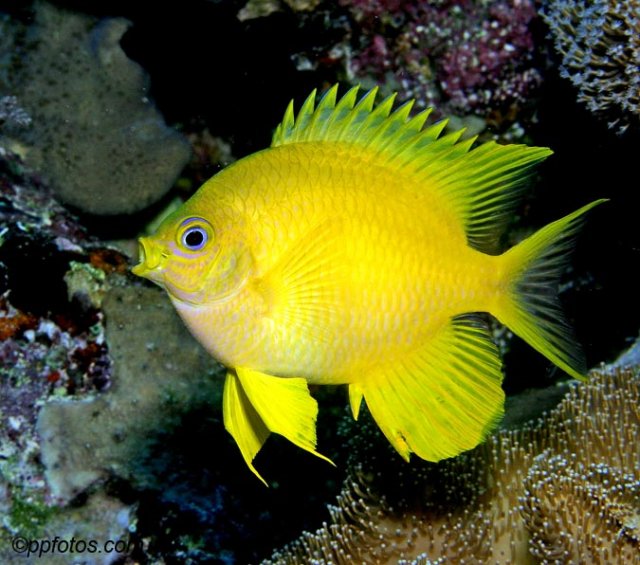
And of course you always have the guys you can’t see, The stonefish is a close relative of the lionfish. Its harmless appearance disguises venomous spines that are lethal to humans.
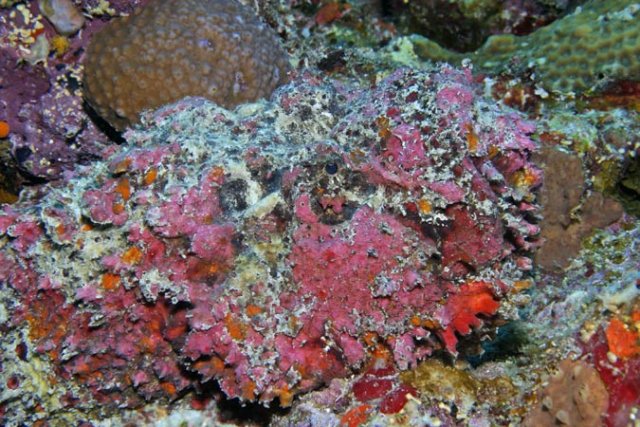
And a relative (I didn’t know they were related) that was out early one morning diving Rain Island.
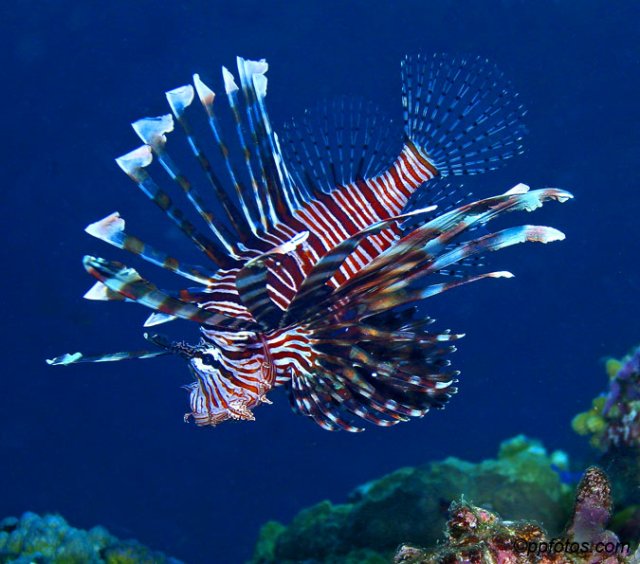
The lionfish lives in shallow water among the rocks and coral reefs of warm and temperate seas. Its featherlike fins and bristling spines are not merely decorative but, rather, serve as camouflage that helps protect the fish among the seaweed and coral on the seabed. The lionfish spends most of its time lurking or resting among the rocks on the bottom of the seabed. It is rarely detected unless it moves. This behavior is typical of most scorpion fish (members of the Scorpaenidae family).
Hawk fish came in some different shapes and colors, """Hawkish are opportunistic carnivores, feeding mostly on small fishes or crustaceans. There are 35 known species. The Longnose Hawkish has a very long snout and a tuft of cirri (glossary) near the tip of each dorsal fin spine. It is white with a "grid pattern" of horizontal and near-vertical red lines. It is often observed perched on gorgonians (sea fans) or black coral.
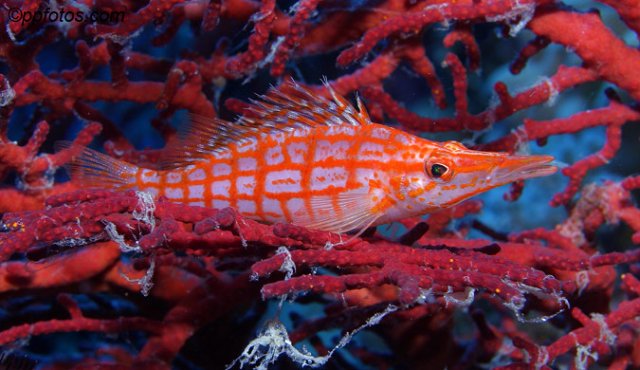
Arc-eyed hawk fish (family Cirrhitidae) is about two inches (5 cm) in length. As with other hawk fish, it has a voyeuristic nature, seeming intensely interested in spying on me, yet cautiously maintaining a respectable distance. Lacking a swim bladder, they spend most of their time perched on corals, watching for prey, interrupted by an occasional sudden dash to another nearby vantage point.
Arc-eyed hawk fish
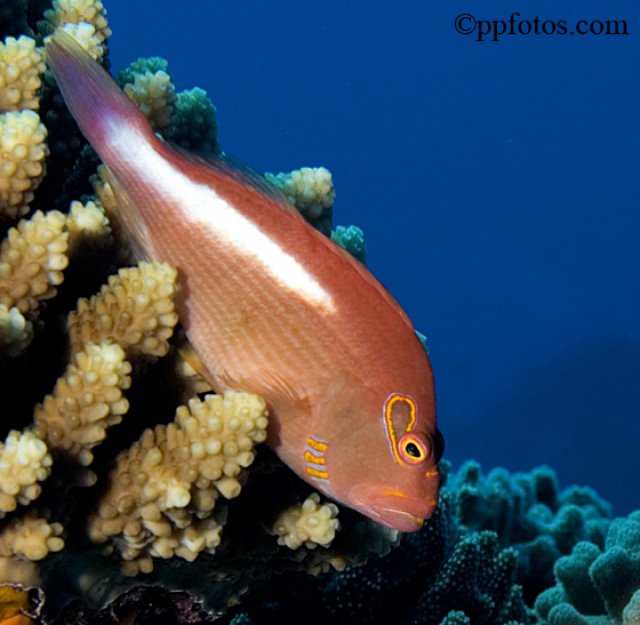
Freckled hawk fish
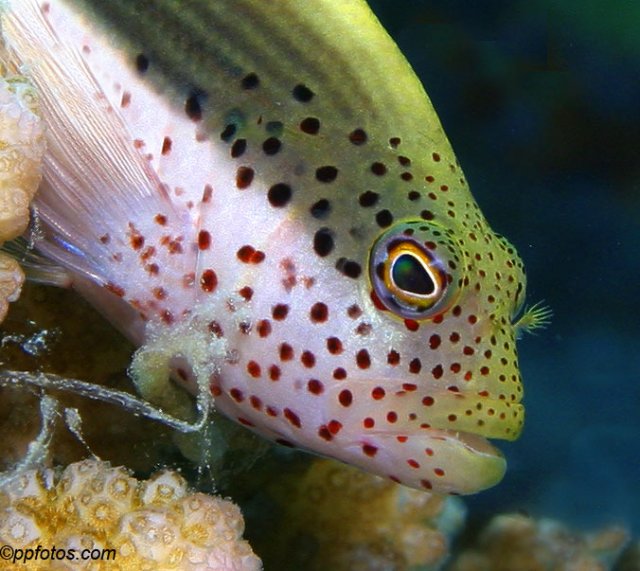
Now let’s talk some favorites. Not only cause I like the colors or characteristics of a species, but sometimes, I just love the challenge of trying to get the shot.
""This finger-sized tropical fish is one of about 60 related species that construct burrows in sand or coral rubble on reefs. Its coloration is distinctive, with a pale head and a body that grades smoothly into a deep-orange red near the tail. Adults hover nervously, alone or in pairs, over their burrows facing the current while feeing on zooplankton. They quickly dart into their burrows when threatened"""
Fire Goby
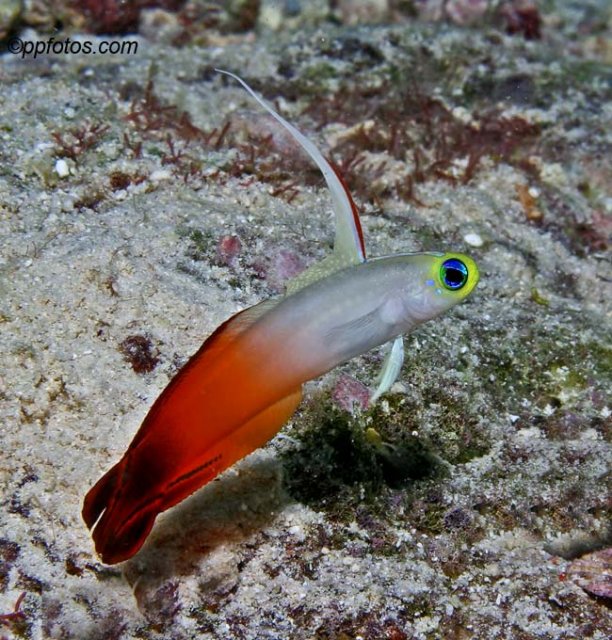
Remember playing hide and seek growing up, well trying to shoot a Blue striped Fang Blenny IS LIKE playing hide and seek. You come close he goes down, u back up, he comes out, over and over and over but patience and patience and eventually they will get used to you .
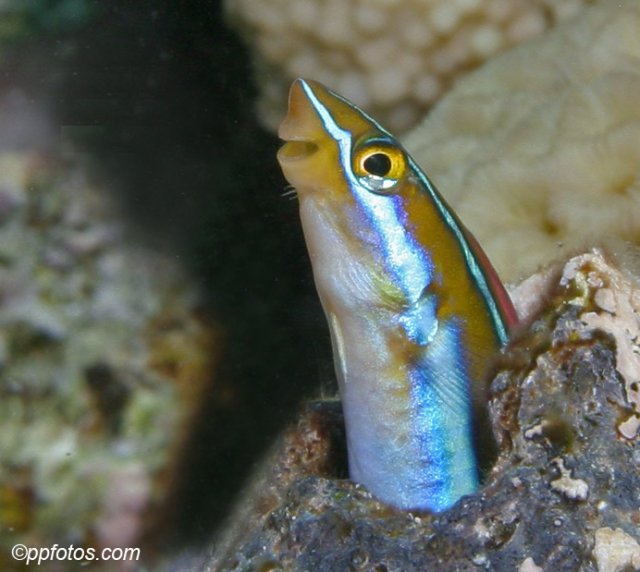
To each his own, I’ll always believe, 'better2B lucky than good' (yes make your luck) but time and place when shooting nature is just good karma. How'd I get so lucky to dive at this depth and go clockwise on this dive and to boot, to be perched and sitting here waiting like she was waiting for me, Leaf Scorpion, cream variation, 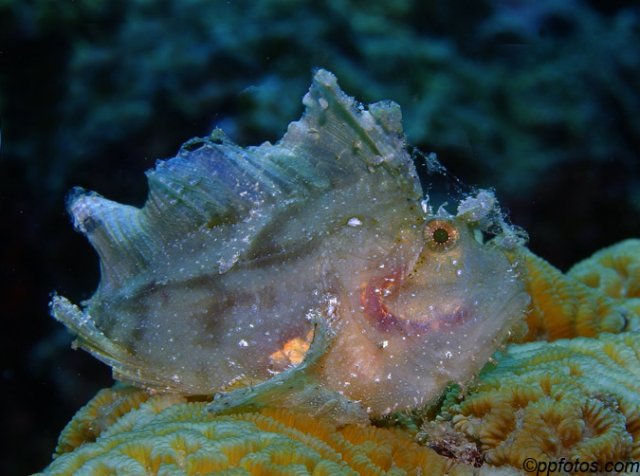
and then for some reason, working taking the pictures on the above subject, I saw something move out of the corner of my eye, :) ooooffffaaaa, I always tell me subjects, 'I love u" and minding her business watching me shoot her family member, I was able to get the yellow variation!
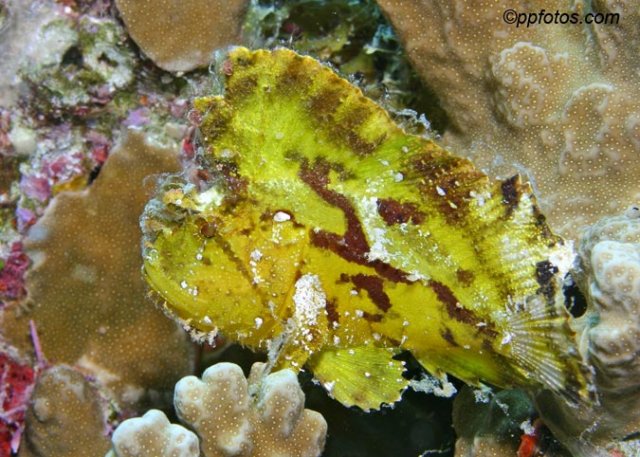
And before my buddies say anything, these last 2 pictures as of some others, was taken the week before we were diving together :)) let’s start to wrap this up, and these are some of what I really just loved. ""Spotted Pipefish can grow to 27cm in length. They are thought to live for about one year. This species is usually found in sea grass beds and weedy areas on rocky reefs. Spotted Pipefish use the prehensile tail to hold onto sea grass or algae. They feed on small crustaceans, mostly copepods and mysids. The Spotted Pipefish is endemic to (only found in) Australia. It occurs in marine waters from southern Queensland to Tasmania and in south-western Australia."” I worked no lie, almost a whole 70-minute dive trying to get these 2 in the shot, this dive site, had tons of orange spotted pipe fish, and it was frustrating, butt,
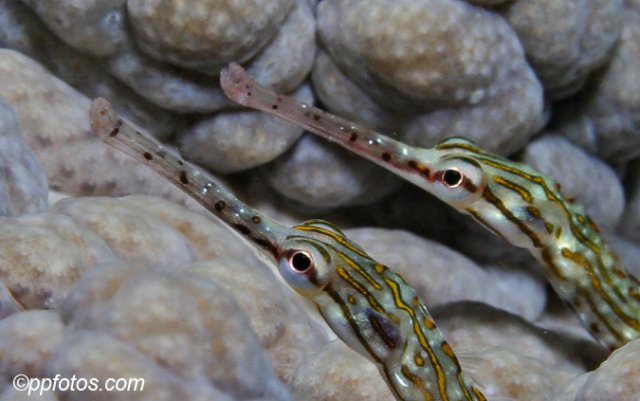
and talk about finding one that was letting me in so close, so close, I tell you, nothing like tawwwking to your subjects, :) letting you know just how much 'I love you'
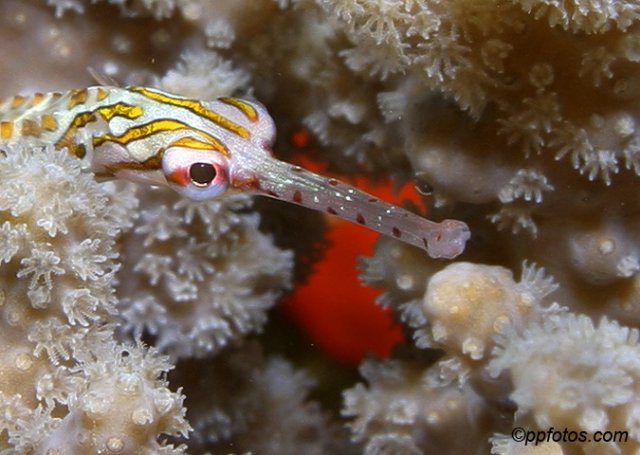
Nudi's are really taking over my interest, I have some nice trips next year, just for these guys, I am starting to study id's and habits.
Chromodoris quadcolors
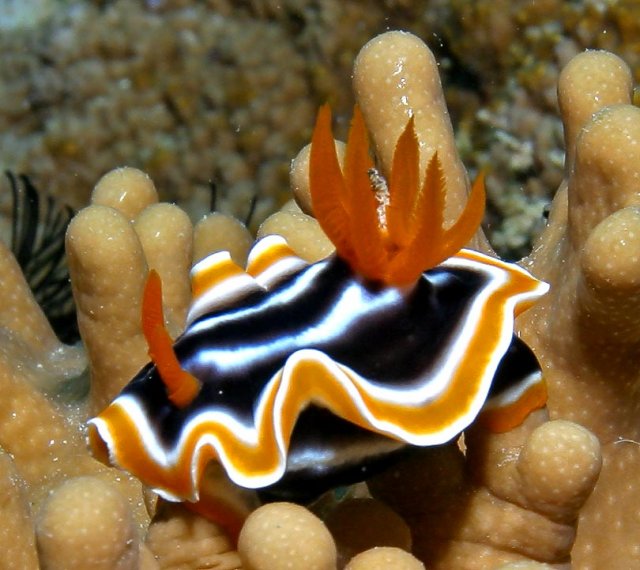
Chromodoris Coi
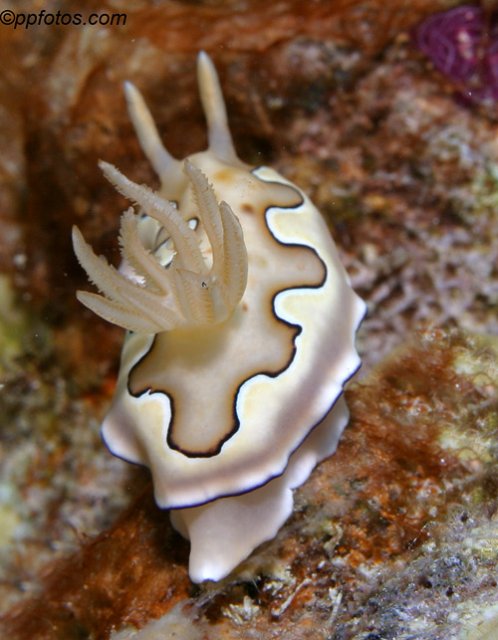
And of course, if u don’t mind a repeat of this picture, and wow, does it look awesome printed up, the end of a dive, working my way back to the boat, found this at 20ft, next thing we were at 50ft and then back up...wow, listen to your ears when they are talking to you!

To those I shared the diving with, a room with, and a meal with, another story with, it was lots of fun. Hope you enjoyed, if I made a mistake in id or whatnot, let me know. If you want to see the settings I used for a shot or more pics from this trip, there is a gallery at Australia Gallery with all the setting info of each picture listed.
© 1998 - 2007 Pasquale Pascullo - All photography and images are protected under U.S. Copyright Law. Unauthorized use is strictly prohibited.
